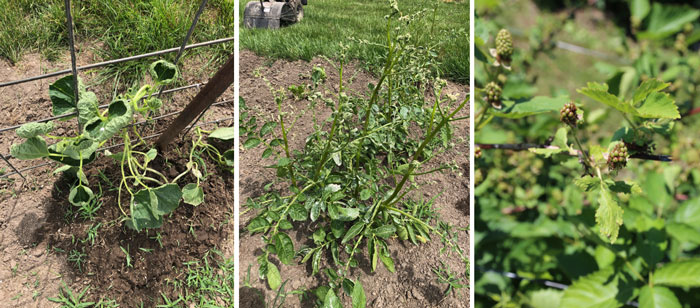Taking an environmentally sensitive approach to pest management
Dicamba Injury Mostly Confined to Specialty Crops, Ornamentals and Trees so Far
Published: June 6, 2018
Last year we attempted to provide updates as to the extent of dicamba-injured soybean throughout the United States. We finished the season with approximately 2,700 cases under investigation by the various state Departments of Agriculture, and approximately 3.6 million acres of dicamba-injured soybean acres as reported by university weed scientists. Many have asked us to keep track of this information in 2018, and so we start here with a June 1st update.
As of June 1st, the reports we received from university weed scientists and state Department of Agriculture representatives indicate that almost all of the dicamba injury that has occurred thus far has occurred to specialty crops, vegetables, and ornamental, fruit, and shade trees. Only Arkansas, Mississippi, Missouri, Nebraska, and Texas have reported probable injury to soybean (approximately 800 acres) as a result of off-target movement of dicamba, while Tennessee has reported 100 acres of cotton with dicamba injury. Arkansas, Mississippi, Missouri, Nebraska, Tennessee, and Virginia have each reported injury to various types of trees, ornamental species, garden plants, flowers and berries. With specialty crops and homeowners, these cases are usually reported by total number of plants injured rather than by acreage, but it can vary by state and by individual situation. As of June 1st, approximately 200 tomato plants, 150 ornamental trees, 30 fruit trees, 250 vegetable plants, and 150 berry species were reported with probable dicamba injury in these six states, along with approximately 50 acres of hardwood/shade trees. The states of Alabama, Florida, Georgia, Illinois, Iowa, Kansas, Kentucky, Louisiana, Michigan, North Carolina, North Dakota, Ohio, Pennsylvania, and South Dakota have not reported any incidents of off-target movement of dicamba so far.

As of June 1st, dicamba injury to cucumber, tomato, and blackberry plants, as well as a variety of other specialty crops and ornamental, vegetable, and tree species has been more common than injury to soybean.
Subscribe to receive similar articles sent directly to your inbox!
REVISED: February 21, 2017